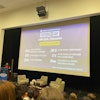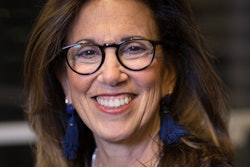Scholars Debate Effectiveness of Single-Sex Classes
Girls clearly benefit, but some educators fear such classes will simply warehouse Black boys.
By Kenneth J. Cooper
Leah Hasty was looking to provide a male role model for Black boys enrolled in the Baltimore public elementary school where she was principal, and at the same time inspire them to perform better academically. She decided upon an approach few other public schools were trying at the time.
She created a class for boys only. Fortunately, she had available one of the rarest assets in American education – a Black man on an elementary school faculty. The teacher had grown up in the same low- income neighborhood and volunteered to teach the class as the boys progressed from grade to grade. Before long, the boys started attending school more often and got engaged with learning.
“Somebody did say to me one time, ‘What about the girls?’” Hasty recalls. So she broadened and balanced the experiment, forming three classes per grade; one for boys, one for girls and one that was coed.
“With that, we determined the girls did much better in the single-sex class. The boys did better, but they were outdistanced by the girls,” she says.
That was in the early 1990s. Hasty, who retired in 1995, had little idea she was pioneering an innovation that the federal government would eventually endorse.
The U.S. Department of Education last month adopted new rules that give public school districts the flexibility to establish single-sex schools and classes, as long as enrollment is voluntary and a comparable coeducational opportunity is available.
U.S. Sens. Kay Bailey Hutchison, R-Texas, and Hillary Rodham Clinton, D-N.Y sponsored language in the No Child Left Behind Act that relaxed Title IX rules against gender discrimination.
Though the new rules do not mention race, they are actually a delayed response to the experiments of Hasty and other Black educators in Baltimore, Detroit, Milwaukee and New York. The original experiments were designed to address the needs of Black boys who come from homes and neighborhoods lacking positive male role models. Until the federal No Child Left Behind law was enacted in 2002, single-sex education in public schools stood on uncertain legal ground. Hasty says Baltimore school officials had let her proceed with a wink, but without a nod because “they were afraid it was illegal.” However, her experiment attracted the attention of then-U.S. Vice President Dan Quayle, who visited boys in one of her single-sex classes, as did former Baltimore Mayor Kurt Schmoke.
By the mid-1990s, the experimental classes and schools had been shuttered, under pressure from the Clinton administration and the National Organization for Women. Dr. Spencer Holland, an educational psychologist who had helped establish effective single-sex classes at another Baltimore elementary school, says in the early 1990s the Congressional Black Caucus scuttled a plan for a formal pilot project.
The idea has proved resilient, though. In the last decade, 241 public schools have begun to offer single-sex education, mostly in separate classes, according to the National Association for Single-Sex Public Education. Schools in Houston and Bedford-Stuyvesant and the Bronx in New York City, for instance, target Black boys.
When Dr. Roderick Paige, former U.S. Education Secretary, proposed the new rules in 2004, he said one study found that “single-sex education particularly helps children from underprivileged backgrounds.” However, Black male scholars interviewed after the final rules were issued in October say that despite anecdotal reports like Hasty’s and Holland’s, no rigorous research supports that conclusion.
“There is no clear evidence that this is going to help at all” with Black boys, says Dr. Pedro Noguera, a sociology professor at New York University. “The research is very clear — girls benefit. Schools for girls were specifically designed to fight gender stereotypes.”
Dr. Na’im Akbar, a psychology professor at Florida State University, agrees that there is a lack of empirical evidence supporting single-sex education’s positive effects for male students. However, he invokes the academic successes of the Nation of Islam and Catholic schools in urging that most Black boys be educated in single-sex settings.
Noguera and Dr. Asa G. Hilliard, a professor of urban education at Georgia State University, raise cautions about Black boys being forced into single-sex schools or classes.
“They could easily become dumping grounds for boys the schools don’t want anyway,” Noguera says. He also suggests that those classes could become “hyper-masculine environments” that reinforce negative behaviors. That hasn’t been the case at the all-male Eagle Academy in the Bronx, which has avoided both pitfalls and become a quality school, although Noguera suggests that the skillful educators there might get the same results if the school was coed.
Hilliard says schools can be configured in many ways to get high achievement, and single-sex education doesn’t guarantee that outcome.
“You can have high-performing mixed schools or single- gender schools, or low” achieving ones of either type, he says.
The Education Department rules are still subject to challenge in the courts. Theodore M. Shaw, director-counsel and president of the NAACP Legal Defense and Educational Fund, says his organization has not taken a position on the issue even though it is traditionally opposed to segregating individuals by race or gender. But this case may be an exception.
“I believe the crisis among Black males is so severe we have to have some room to experiment,” Shaw says.
Before retiring last year, Holland crusaded for single-sex education for Black boys for two decades. He directed the Center for Educating African-American Males, then at Morgan State University, from 1990 to 1994. Holland dismisses the legal arguments against gender discrimination.
“We have all-boys classes by default; they’re called special education because they failed to learn to read in the primary grades,” he says. “They get segregated [again] eventually. Our prisons are filled with
Black males who can’t read.”
© Copyright 2005 by DiverseEducation.com





















